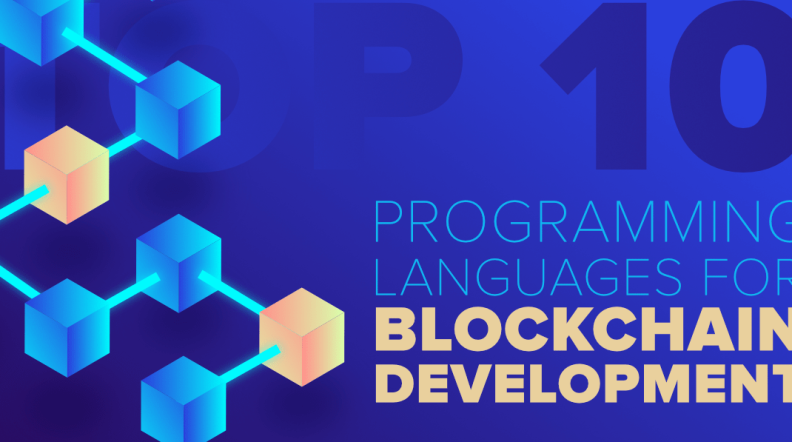Best Programming Language for Blockchain: A Comprehensive Guide






As blockchain technology continues to revolutionize industries across the globe, the choice of programming language becomes crucial in the development of blockchain systems. This comprehensive guide aims to explore the various programming languages that are best suited for blockchain development, taking into account the unique requirements of the blockchain market. From the creation of smart contracts to the development of decentralized applications, the right programming language can significantly impact the efficiency, security, and scalability of blockchain systems.
Understanding the nuances of each programming language and its compatibility with blockchain technology is essential. This guide delves into the specifics of leading programming languages in the blockchain domain, highlighting their strengths and weaknesses. Whether you are a seasoned blockchain developer or just starting out, this guide will provide valuable insights into selecting the best language for your blockchain project, ensuring that you are well-equipped to navigate the ever-evolving blockchain landscape.
Introduction to Blockchain Technology and Its Development Needs
Blockchain technology, at its core, is a decentralized digital ledger that records transactions across multiple computers. This ensures that each transaction is secure, transparent, and immutable. The development of blockchain systems requires a robust programming foundation to handle complex algorithms, data structures, and cryptographic functions. Consequently, the choice of programming language becomes a pivotal decision in the blockchain development process.
The development needs of blockchain systems are diverse, encompassing the creation of smart contracts, decentralized applications (DApps), and consensus algorithms. These needs demand a programming language that offers not only a high level of security but also efficiency and flexibility. Moreover, the language must support the development of systems that can operate across various blockchain platforms, ensuring interoperability and scalability.
As blockchain technology continues to evolve, so too does its development landscape. Emerging trends, such as the integration of artificial intelligence and the advent of quantum-resistant blockchains, pose new challenges. Developers must choose a programming language that can adapt to these advancements while maintaining the integrity and security of blockchain systems.
Furthermore, the programming language must facilitate a smooth development process. This includes ease of debugging, testing, and deployment of blockchain applications. The language should also have a supportive community and a rich ecosystem of development tools and resources, which are invaluable for both novice and experienced blockchain developers.
Considering the critical role of smart contracts in automating transactions and establishing trust in blockchain systems, the programming language must enable precise and secure contract interaction. This is essential for the widespread adoption and success of blockchain technology in various sectors such as finance, healthcare, and supply chain management.
In summary, the development needs of blockchain technology are multifaceted, requiring a programming language that is versatile, secure, and capable of supporting the complex architecture of blockchain systems. The next sections will explore the key factors to consider when choosing a programming language for blockchain development, followed by an overview of the leading programming languages in the field.
Key Factors to Consider When Choosing a Programming Language for Blockchain
When selecting a programming language for blockchain systems, developers must consider speed and performance, security features, community support and resources, and compatibility with blockchain platforms.
Speed and Performance
Speed and performance are critical for blockchain systems, especially when processing transactions and executing smart contracts. The chosen programming language must enable the development of efficient code that can handle high transaction throughput and minimize latency. This ensures a seamless and scalable blockchain network that can meet the demands of users and applications.
Security Features
Security is paramount in the development of blockchain systems. The programming language must support robust security features, such as dynamic memory allocation and a comprehensive standard library, to protect against vulnerabilities. Additionally, opting for a high-level language can enhance security by abstracting complex details and reducing the risk of errors that could compromise the blockchain.
Community Support and Resources
A strong community and rich resources are invaluable for blockchain developers. The programming language should have an active community that contributes to a wealth of documentation, libraries, and tools. This support network can assist developers in overcoming challenges, staying updated with the latest trends, and leveraging best practices in blockchain development.
Compatibility with Blockchain Platforms
Compatibility with various blockchain platforms is essential for the development of interoperable and versatile blockchain applications. The programming language should facilitate easy integration with leading blockchain platforms, allowing developers to build applications that can operate across different blockchain ecosystems. This flexibility is crucial for the widespread adoption and success of blockchain technology.
Leading Programming Languages for Blockchain Development
The best language for blockchain development depends on the specific needs of the project, including contract interaction, security, and platform compatibility.
1. Solidity – The Premier Choice for Smart Contracts
Solidity is renowned for its role in smart contract development.
Introduction to Solidity
Solidity is a contract-oriented programming language designed for developing smart contracts that run on the Ethereum blockchain. It is influenced by languages such as JavaScript, enabling blockchain programmers to easily adopt it. Written in Solidity, smart contracts can establish money markets, execute transactions, and manage digital assets securely and efficiently. This makes Solidity a cornerstone of blockchain technology programming.
Key Advantages for Blockchain Development
Solidity’s syntax and functionalities are specifically tailored for blockchain applications, particularly in creating and managing smart contracts. Its compatibility with the Ethereum Virtual Machine (EVM) allows for seamless contract interaction, making it a preferred choice among blockchain developers. Solidity’s design caters to the unique security and operational demands of blockchain systems, positioning it as a leading programming language in the field.
2. Python – Versatile and Beginner-Friendly
Python’s simplicity and versatility make it a strong candidate for blockchain development.
Python’s Role in Blockchain Innovation
The nature of blockchain technology and the popularity of blockchain applications have been significantly influenced by Python. Its simplicity, combined with powerful libraries, makes Python an ideal language for exploring the capabilities of blockchain systems. Python’s role in blockchain innovation extends to various domains, including financial software and smart contract design, underscoring its versatility and broad applicability.
Strengths in Blockchain Application
Python excels in blockchain application due to its simplicity, readability, and the extensive support for object-oriented programming (OOP). These characteristics facilitate rapid development and testing of blockchain systems. Python’s libraries and frameworks, such as Vyper for smart contract design and Algorand for blockchain interactions, offer developers a rich set of tools to build secure and efficient blockchain applications. This, combined with Python’s flexibility in software development and scripting approaches, makes it a preferred choice for blockchain and smart contract development.
3. JavaScript – Bringing Blockchain to the Web
JavaScript’s ubiquity in web development extends to blockchain, particularly in DApp and game development.
How JavaScript Fits into the Blockchain Ecosystem
JavaScript’s integration into the blockchain ecosystem is largely due to its ubiquity in web development. Most web browsers support JavaScript, making it a critical tool for creating interactive and user-friendly decentralized applications (DApps) on the blockchain. The dynamic nature of blockchain technology benefits from JavaScript’s flexibility, allowing developers to build responsive interfaces that interact with the blockchain seamlessly. Additionally, the popularity of blockchain platforms that support JavaScript further solidifies its place in the blockchain community, enabling widespread adoption and innovation.
Advantages for Decentralized Applications (DApps)
The Ethereum network, a leading platform for DApps, is inherently compatible with JavaScript, presenting a significant advantage for developers. JavaScript’s event-driven model aligns well with the decentralized nature of blockchain, enabling efficient development of applications that can respond in real time to blockchain events. This integration facilitates the creation of sophisticated DApps that can operate smoothly on the Ethereum network, leveraging its secure and decentralized infrastructure to offer enhanced user experiences and functionalities not possible with traditional web applications.
4. Go (Golang) – Concurrency for Scalable Blockchains
Go, also known as Golang, has emerged as a favorite among blockchain developers due to its inherent support for concurrency. This feature is crucial for blockchain applications that require high performance and scalability. The Cosmos SDK, one of the most prominent tools in blockchain development, is built using Go, showcasing the language’s capability to support large-scale, interoperable blockchain ecosystems efficiently.
Overview of Go in Blockchain
Go’s design is optimized for simplicity and efficiency, characteristics that are vital for blockchain development. Its powerful standard library and runtime efficiency make it ideal for building complex blockchain networks that can handle a high volume of transactions. Go’s syntax is straightforward, reducing the learning curve for new developers entering the blockchain space. This accessibility, combined with Go’s robust performance, has led to its adoption in several blockchain projects aiming to achieve high throughput and scalability.
Benefits for Blockchain Systems
Blockchain systems built with Go benefit from the language’s advanced concurrency model, which enables the simultaneous processing of multiple transactions. This is particularly advantageous for blockchain networks, where speed and efficiency are paramount. Go’s strong memory safety features also contribute to the security of blockchain applications, reducing the risk of common vulnerabilities. Additionally, the extensive ecosystem of tools and libraries available for Go developers facilitates the rapid development of secure and scalable blockchain solutions.
5. Rust – Safety and Performance Hand in Hand
Rust offers a unique combination of safety and performance, making it an attractive choice for blockchain development. Its emphasis on memory safety, without sacrificing speed, addresses some of the key challenges in building reliable and efficient blockchain systems. Rust’s support for concurrency-based opportunities further enhances its suitability for developing high-performance blockchain applications that can handle the demands of complex decentralized networks.
Rust’s Position in Blockchain Development
Rust is increasingly recognized in the blockchain community for its potential to provide safe, fast, and concurrent solutions. Its powerful type system and ownership model prevent many common bugs, ensuring that blockchain applications are secure and robust. Rust’s capacity for parallel execution means that blockchain networks can scale effectively, processing transactions and operations more quickly. These attributes make Rust a compelling choice for projects aiming to push the boundaries of what’s possible with blockchain technology.
Why Choose Rust for Blockchain Projects
The decision to utilize Rust for blockchain projects stems from its unmatched balance of speed, safety, and concurrency. Rust’s compile-time safety checks eliminate a wide range of errors, making blockchain applications more reliable. Its performance is on par with that of lower-level languages, such as C++, but with added safety and modern features. For blockchain projects looking to innovate while maintaining high standards of security and efficiency, Rust presents an ideal programming language choice.
6. Java – Robust and Object-Oriented Approach
Java’s robust, object-oriented approach has made it a popular choice for blockchain projects. Its widespread use in back-end development provides a solid foundation for building secure, scalable blockchain platforms. Java’s automatic memory cleaning helps manage resources efficiently, critical for maintaining the performance of blockchain networks. Additionally, the extensive community support and wealth of resources available to Java developers facilitate the development of blockchain applications across various blockchain platforms.
Java’s Contribution to Blockchain Technology
Java has significantly contributed to the advancement of blockchain technology through its versatile, object-oriented design. This approach enables developers to create modular blockchain systems with reusable components, enhancing both productivity and maintainability. Java’s platform independence means blockchain applications can run on any device that supports the Java Virtual Machine (JVM), promoting wider adoption and interoperability among blockchain platforms. Its strong security features also make Java a reliable choice for developing blockchain applications that demand high levels of data integrity and privacy.
Reasons for Its Popularity in Blockchain
Java’s popularity in blockchain development can be attributed to its maturity, robust tooling, and large developer community. Its well-established practices for back-end development offer a familiar environment for creating complex blockchain applications. Java’s ability to build cross-platform applications ensures that blockchain solutions can reach a broader audience. Furthermore, the extensive libraries and frameworks available to Java developers enable rapid development cycles, making it easier to bring innovative blockchain projects to market.
7. C++ – The Power of Object-Oriented Programming
C++ leverages the power of object-oriented programming to offer flexibility and efficiency in blockchain development. Its rich library support and the ability to manage data and functions with precision make it one of the best programming languages for blockchain. C++’s features like data hiding and the use of classes allow for creating secure and modular blockchain platforms. The language’s efficiency on multiple platforms and its role in the development of several open-source blockchain platforms highlight its suitability for blockchain development, accommodating the needs of various projects.
C++ in the Context of Blockchain
In the blockchain world, C++ is prized for its control over system resources and complex functionalities. The language’s object-oriented capabilities, including polymorphism, encapsulation, and inheritance, enable developers to build flexible and scalable blockchain systems. C++’s efficiency in executing low-level memory manipulations enhances the performance of blockchain applications, crucial for processing transactions swiftly. Its longstanding presence in the software development industry has also ensured that C++ developers have access to a vast ecosystem of tools and libraries to support blockchain development.
Advantages of Using C++ for Blockchain Development
C++ offers several advantages for blockchain development, including control over memory and system resources, critical for optimizing the performance of blockchain applications. Its object-oriented nature facilitates modular programming, allowing developers to build complex systems with reusable components. The language’s rich set of libraries supports the rapid development of secure and efficient blockchain platforms. Furthermore, C++’s compatibility with multiple platforms ensures that blockchain applications can reach a wide audience, reinforcing its position as a preferred choice for blockchain development.
8. C – The Foundation of Modern Programming Languages
The significance of C in the development of modern programming languages, including those used in blockchain, cannot be overstated. Its simplicity and efficiency make it a valuable tool for creating foundational software components for blockchain systems. While higher-level languages are often preferred for their features and ease of use, C’s direct access to hardware and memory resources offers unparalleled control and optimization capabilities, essential for developing high-performance blockchain applications.
C’s Significance in Blockchain Development
C, as a foundational programming language, plays a pivotal role in the realm of blockchain technology. Its significance lies in its ability to provide a robust framework for building complex systems, including the first cryptocurrency, Bitcoin. C’s low-level access to memory and system resources allows developers to optimize blockchain operations for speed and efficiency. Consequently, this reliable programming language has become the bedrock upon which many cryptographic algorithms and protocols are developed, ensuring the secure and efficient performance that blockchain networks demand.
Key Benefits for Blockchain
The utilization of C in blockchain development offers several key advantages. Firstly, its execution speed and efficiency are unmatched, making it ideal for systems where performance is critical. Secondly, C’s extensive control over system resources enables developers to enhance security measures against potential attacks. Lastly, the extensive use of C in system programming has led to a rich ecosystem of tools and libraries, which can be leveraged for blockchain development. These benefits collectively make C an invaluable asset in the creation and maintenance of blockchain systems.
9. Move – Designed Specifically for Diem Blockchain
Move is a novel programming language tailored for the Diem Blockchain, aiming to revolutionize smart contract design and implementation. Its creation was driven by the need for a secure, flexible, and efficient programming language for smart contract development, catering specifically to the unique demands of the Diem network. Move sets a new paradigm in the way smart contracts are developed, offering unprecedented control and safety features that align with the goals of creating a more accessible and secure digital financial infrastructure.
An Introduction to Move
Move is a cutting-edge programming language for smart contract development, engineered with the primary intent of serving the Diem Blockchain. It introduces innovative concepts such as linear types for resource management, which prevents duplication of assets and ensures transactions’ atomicity. Moreover, Move’s design emphasizes security and correctness, incorporating features that facilitate the detection and prevention of common vulnerabilities in smart contract design. As Diem Blockchain evolves, Move is also being adopted by other projects like Aptos and Sui, showcasing its versatility and robustness in a decentralized ecosystem.
Unique Features for Blockchain Development
Move stands out in the blockchain space with its unique features tailored for secure and efficient blockchain development. One of its notable capabilities is the dynamic dispatch mechanism, which allows for flexible contract upgrades while maintaining a strong safety guarantee. Additionally, Move’s resource-oriented programming model ensures that digital assets are treated with the same scarcity and conservation laws as physical assets, a critical requirement for financial applications. These distinctive characteristics make Move an apt programming language for smart contract development, especially in systems prioritizing security and fidelity of transactions.
Emerging Programming Languages and Technologies
The landscape of blockchain development is continually evolving, with new programming languages and technologies emerging to address the unique challenges of this domain. These innovations aim to enhance security, efficiency, and ease of use in blockchain and smart contract development. Among these, languages like Vyper and Motoko offer specialized features for developing smart contracts, reflecting the dynamic nature of blockchain technology. As these new tools gain traction, they contribute to the expansion and diversification of the blockchain space, paving the way for more sophisticated and secure decentralized applications.
Vyper – A Newcomer for Ethereum Smart Contracts
Vyper positions itself as a fresh contender in the arena of Ethereum smart contracts. Designed to offer a more secure and transparent alternative to Solidity, Vyper eliminates several complex and potentially unsafe features, prioritizing readability and simplicity in smart contract development. Its syntax and design philosophy aim to make smart contracts more accessible to verification, reducing the likelihood of bugs and vulnerabilities. Vyper’s emergence as a programming language for smart contract development reflects the ongoing quest for safer and more reliable blockchain applications.
Motoko – Tailored for the Internet Computer (ICP)
Motoko is a specialized programming language crafted for the Internet Computer (ICP) platform, focusing on harnessing the full potential of blockchain and smart technology. It simplifies the process of developing smart contracts and decentralized applications (DApps) by addressing common challenges such as scalability and interoperability. Motoko’s design integrates features that facilitate the efficient management of state and communication in a decentralized setting, making it an attractive option for developers venturing into the realm of blockchain and smart contract development.
Skills Required for Blockchain Development
Blockchain development is a multifaceted discipline that demands a diverse set of skills. Proficiency in programming languages such as JavaScript is fundamental, given its prevalence in developing decentralized applications. Understanding blockchain architecture and consensus mechanisms provides a solid foundation for creating secure and efficient blockchain projects. Familiarity with smart contract development, cryptographic principles, and data structures like Merkle trees is also crucial. Additionally, developers should possess strong problem-solving abilities and a keen eye for security vulnerabilities. These skills collectively equip developers to navigate the complex landscape of blockchain technology effectively.
How to Start Learning Blockchain Development
Embarking on a journey in blockchain development begins with mastering the basics of blockchain technology and its key concepts. Aspiring developers should explore online courses, tutorials, and development tools that offer hands-on experience with blockchain platforms. Building projects, no matter how small, is invaluable in applying theoretical knowledge. Engaging with the community through forums and attending workshops can provide insights and foster connections with experienced developers. Persistence, continuous learning, and experimentation with different blockchain ecosystems are essential steps towards becoming proficient in blockchain development.
Frequently Asked Questions (FAQs)
Common inquiries in the blockchain realm often revolve around the best practices in software development and the selection of a high-level language for specific projects. Questions also include the pathways to becoming a professional blockchain developer, the intricacies of smart contract development, and the criteria for choosing a suitable programming language for blockchain development. Addressing these queries requires a comprehensive understanding of both the technical and practical aspects of blockchain technology and its applications.
What Is the Best Programming Language for Smart Contract Development?
The quest for the optimal programming language for smart contract development is a topic of considerable debate among developers worldwide. While languages like C offer foundational programming capabilities, the Ethereum blockchain and other leading blockchain platforms often favor high-level, contract-oriented programming languages. Solidity emerges as a popular choice, specifically designed for creating smart contracts and DApps on the Ethereum network. Its syntax is similar to that of JavaScript, making it accessible to a wide range of developers. However, the choice of language ultimately depends on the specific requirements of the blockchain application, including factors like security, efficiency, and compatibility with the intended blockchain platform.
How to Choose a Suitable Blockchain Coding Language for a DeFi Project?
Choosing the right programming language for a DeFi (Decentralized Finance) project is a pivotal decision in the development process. It requires a careful evaluation of the project’s specific needs, including the scalability and complexity of intended financial services. Languages like Solidity, developed by Gavin Wood for Ethereum smart contracts, have become popular due to their direct support for DeFi applications. However, developers should also consider languages like Python for its versatility and ease of use, especially in prototyping stages. Ultimately, the choice should align with the project’s long-term goals, ensuring the language can support robust, secure, and efficient DeFi applications.
Where Can I Find Professional Blockchain Developers?
Finding skilled blockchain developers can often be a challenge due to the specialized nature of the field. Many companies turn to professional networking sites like LinkedIn to discover individuals with the desired expertise. Additionally, there are platforms dedicated to freelancers specializing in blockchain, such as Toptal and Upwork, where one can find professionals with a range of skills from smart contract development to full blockchain network creation. Joining blockchain development communities and attending industry conferences can also be effective ways to connect with experienced developers in the blockchain space.
Move vs Solidity: What Are the Key Differences?
Move and Solidity are both prominent languages in blockchain development, but they serve different ecosystems with distinct characteristics. Solidity, designed by Gavin Wood and others, is the primary language for Ethereum smart contracts, prized for its expressive power and flexibility in creating complex decentralized applications. Move, on the other hand, was developed specifically for the Diem (formerly Libra) blockchain project, focusing on safety and the precise management of resources, like digital assets. While Solidity has a broader application in various blockchain platforms, Move offers a modular approach to smart contract development, emphasizing security and preventing resource duplication.
Drawing Conclusions: Picking the Right Language for Your Blockchain Project
Choosing the right programming language to develop blockchain applications is a crucial decision that impacts not only the development process but also the performance and security of the blockchain itself. Languages like Solidity and Move have been designed specifically for blockchain, offering features like function overloading and compatibility with cryptographic chains, which are vital for creating secure blockchain applications. On the other hand, general-purpose languages such as JavaScript and Python play a vital role in blockchain development due to their flexibility, extensive libraries, and strong community support. These languages facilitate the integration with third-party APIs and plugins, enhancing the blockchain’s functionality and user experience.
Moreover, the choice of programming language can influence the blockchain’s compatibility with various operating systems and platforms like Go-Ethereum and Hyperledger Fabric. For instance, languages written in C offer a robust foundation for blockchain systems due to their efficiency and control over system resources, which is crucial for maintaining the blockchain’s performance. Additionally, considering an OOP language can simplify the development process, as it supports modular and reusable code, making it easier to manage complex blockchain systems. Ultimately, when looking to hire blockchain developers or seeking blockchain consulting, it’s essential to assess the project’s specific needs, including the desired blockchain platform—be it Corda for financial services or a cryptocurrency exchange—and the scalability requirements, to make an informed decision on the programming language that will best meet the project’s goals.